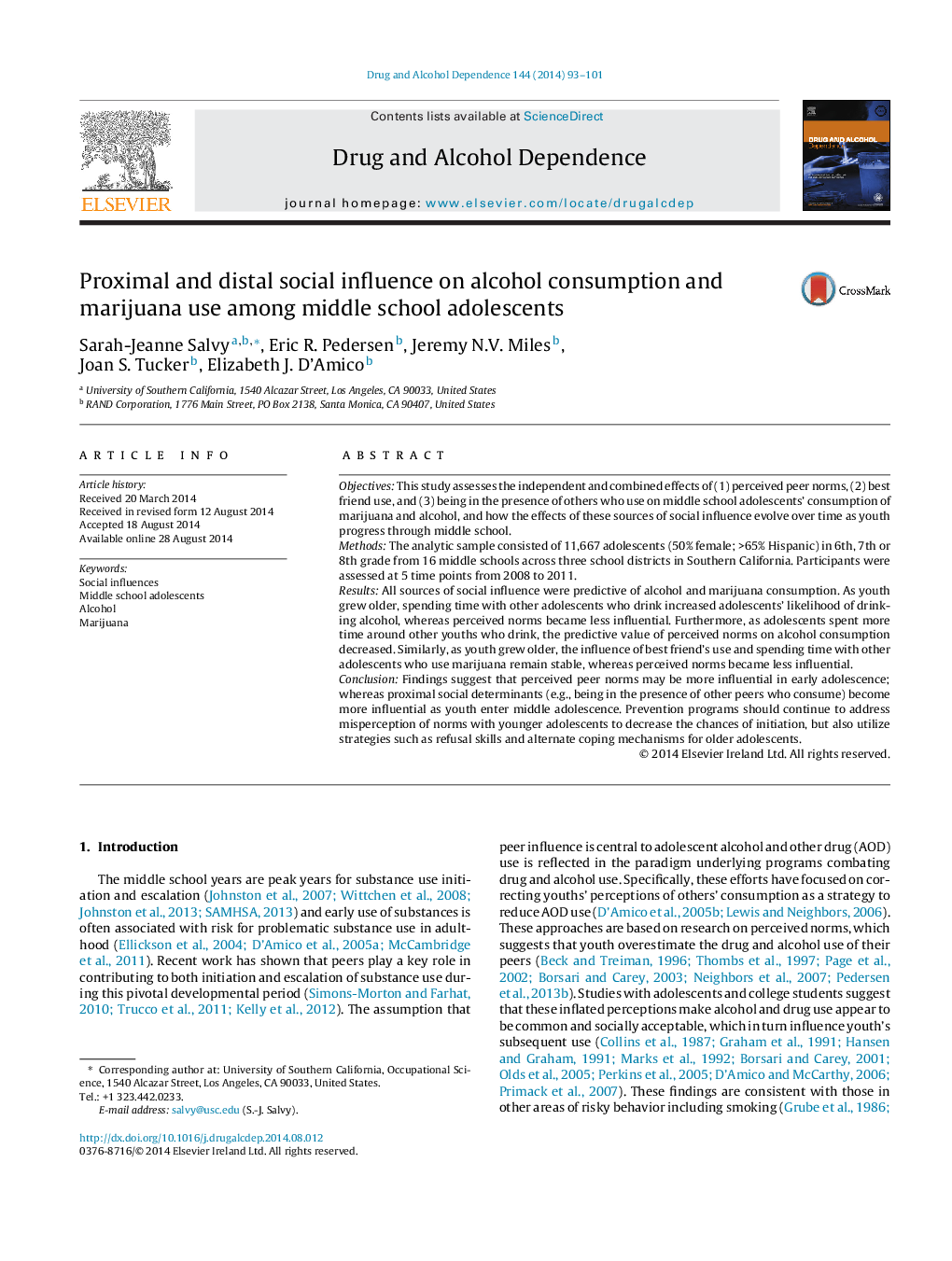| Article ID | Journal | Published Year | Pages | File Type |
|---|---|---|---|---|
| 7505530 | Drug and Alcohol Dependence | 2014 | 9 Pages |
Abstract
Findings suggest that perceived peer norms may be more influential in early adolescence; whereas proximal social determinants (e.g., being in the presence of other peers who consume) become more influential as youth enter middle adolescence. Prevention programs should continue to address misperception of norms with younger adolescents to decrease the chances of initiation, but also utilize strategies such as refusal skills and alternate coping mechanisms for older adolescents.
Keywords
Related Topics
Life Sciences
Neuroscience
Behavioral Neuroscience
Authors
Sarah-Jeanne Salvy, Eric R. Pedersen, Jeremy N.V. Miles, Joan S. Tucker, Elizabeth J. D'Amico,
